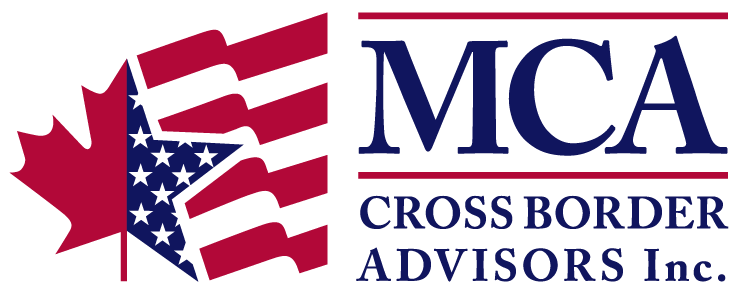This is the time of year when Canadians snowbirds who have been seeking refuge in the U.S. from the Canadian winters start counting the days.
“When did we leave Canada exactly? Was it November 15, honey? How many days have we been gone?”
The magic number is 182. If you are a Canadian and you spend more than your allotted amount of days in the U.S. per year, you may be subject to U.S. income tax on your worldwide income. Beware, Canada will still consider you a resident which may lead to double taxation on your annual income.
For most Canadian snowbirds, half a year is just fine. They go back and forth to the sunbelt states each year using up their days and they do not have tax issues given that they file the Closer Connection Exception Form 8840. For others, 182 days is not nearly enough. They may have a dream to retire in the warmer climate or they want to spend more time with their adult children / grandchildren who are living in the U.S. Some Canadians want to move their business to Florida or Arizona and want to have the right to work in the U.S.
In order to make these dreams a reality, several pieces of the puzzle must fit together. None is more important than obtaining a green card. There are several different routes available however most lead to dead ends. Either they are not eligible for a particular categories (sponsorship by a spouse or parent who is American), while others have too many restrictions and take too long (7 years of working for a specific company that is willing to sponsor them).
There is another route that has become increasing popular for high net worth Canadians who are moving to the states. It is called the EB-5 investor category green card. The EB-5 path allows Canadians to be eligible for a green card if they make an investment of $500,000 in one of the regional center projects that are approved by U.S. immigration.
In order to be approved as a regional center, projects are typically situated in a U.S. location where unemployment is high and economic activity is needed. In addition, the project must demonstrate how it will lead to indirect employment creation.
This investment is ideal for clients or retirees who prefer a hands-off approach. As a limited partner in a pooled investment, the client does not have to participate in the day-to-day management of the project but still maintains some authority over policy.
The projects tend to be real estate driven such as office buildings or hotel chains. Once the project is fully up and running and the building is occupied investors may start making a regular return and ultimately a capital gain once the project is complete.
Three keys to success when considering an EB-5 Green Card:
1. Plan ahead: While most consider the EB-5 a fast track to a green card, it does not happen overnight. There are several steps to obtaining your permanent green card. In most cases, Canadians receive their conditional green card after 15 – 18 months and then it is another 2 years for the condition to be removed. As with most important life choices, it is better to plan ahead.
2. Do Your Due Diligence: Most projects will provide you with a prospectus. Read this document over carefully and seek an endorsement from your trusted advisors. Check the track record of the EB-5 developer. Not all projects are created alike. How long have they been in business? Find out how many green cards have been approved to investors from their project. Ask questions like, “Are the other partners all foreign or are some of them American as well”. This will give you an idea of the quality of the investment. If Americans who do not have any interest in the EB-5 project for a green card are involved this probably means they are interested in project as a solid investment.
3.Find the right professionals: As with most high net worth individuals, having the right professionals on your team may be the best investment decisions you can make. A qualified and ethical accountant, lawyer, or financial planner can save you millions or be the difference in helping you realize your retirement dreams. As mentioned earlier, the green card is a key piece of the puzzle when moving to the U.S. but not the only one. A Canadian who is moving to the U.S. needs a comprehensive cross border plan constructed by professionals who are licensed to practice on both sides of the border. The plan must take into account the changing laws and the Canada-US tax treaty to ensure clients are minimizing departure tax and estate planning issues.
A Canadian who becomes a U.S. resident is now subject to a whole new set of laws. Working with professionals who are aware of how they work may lead to major financial benefit. For example a Canadian who is now a non-resident of Canada may withdrawal their RRSP at a much lower rate of 25% (rather than 48% if they remained in Canada). If the RRSP is collapsed at the appropriate intervals, the tax rate drops again to 15%. That is a 33% tax savings on your retirement dollars.
In closing, the EB-5 is not for everyone. But if you are an affluent Canadian who wants to trade in your habit of counting days out of the country for counting strokes in your golf game or laps at the pool the EB-5 may be for you.

